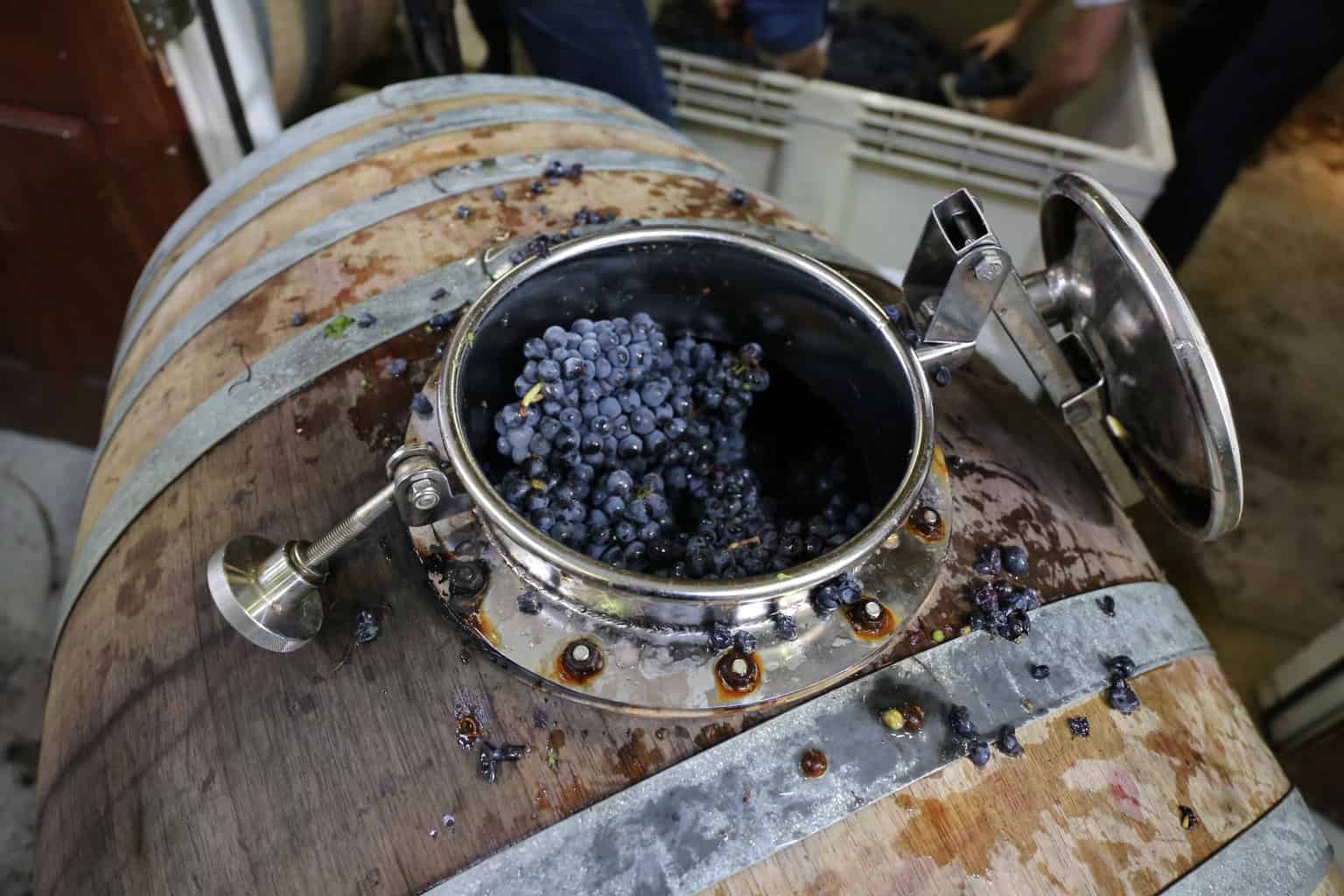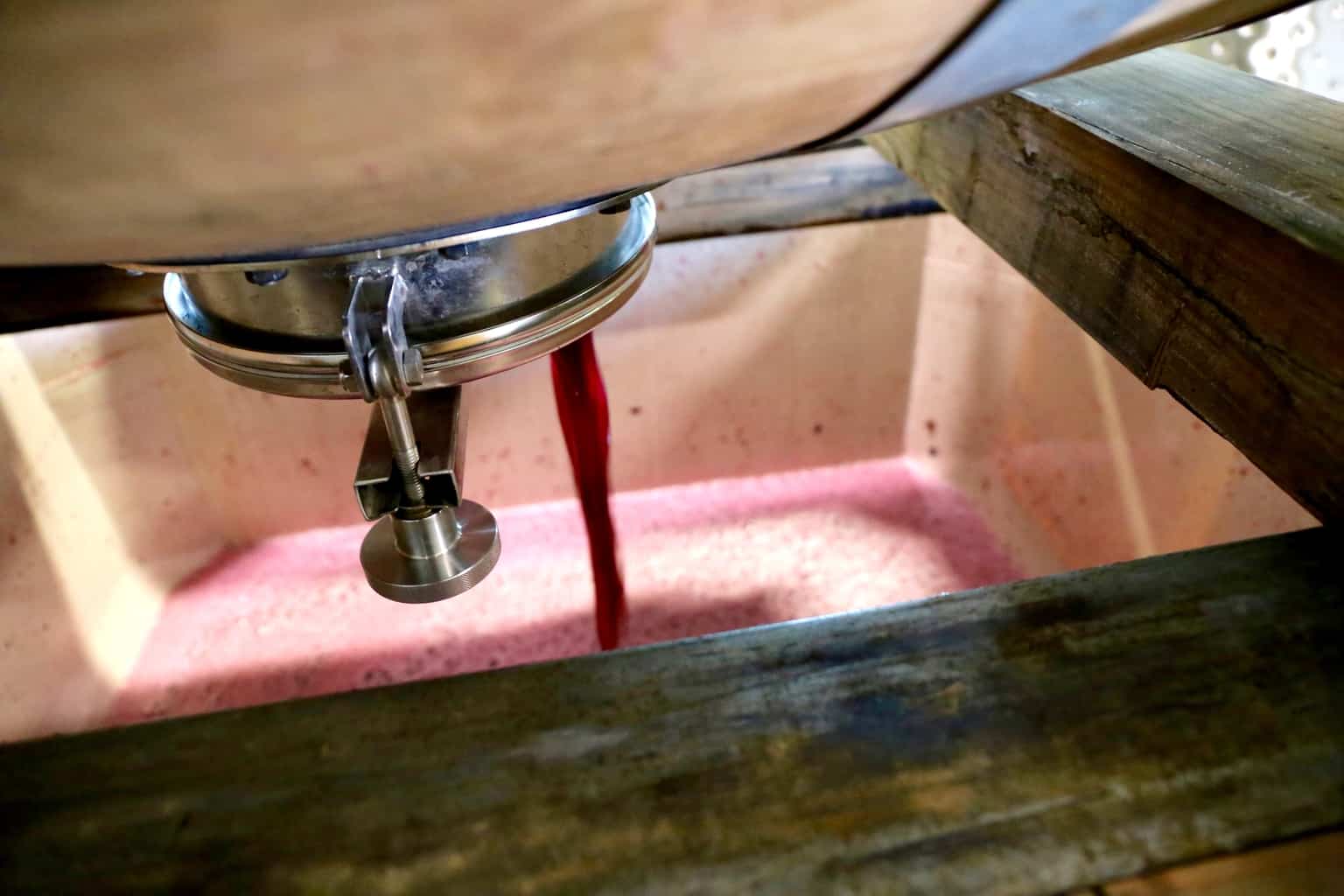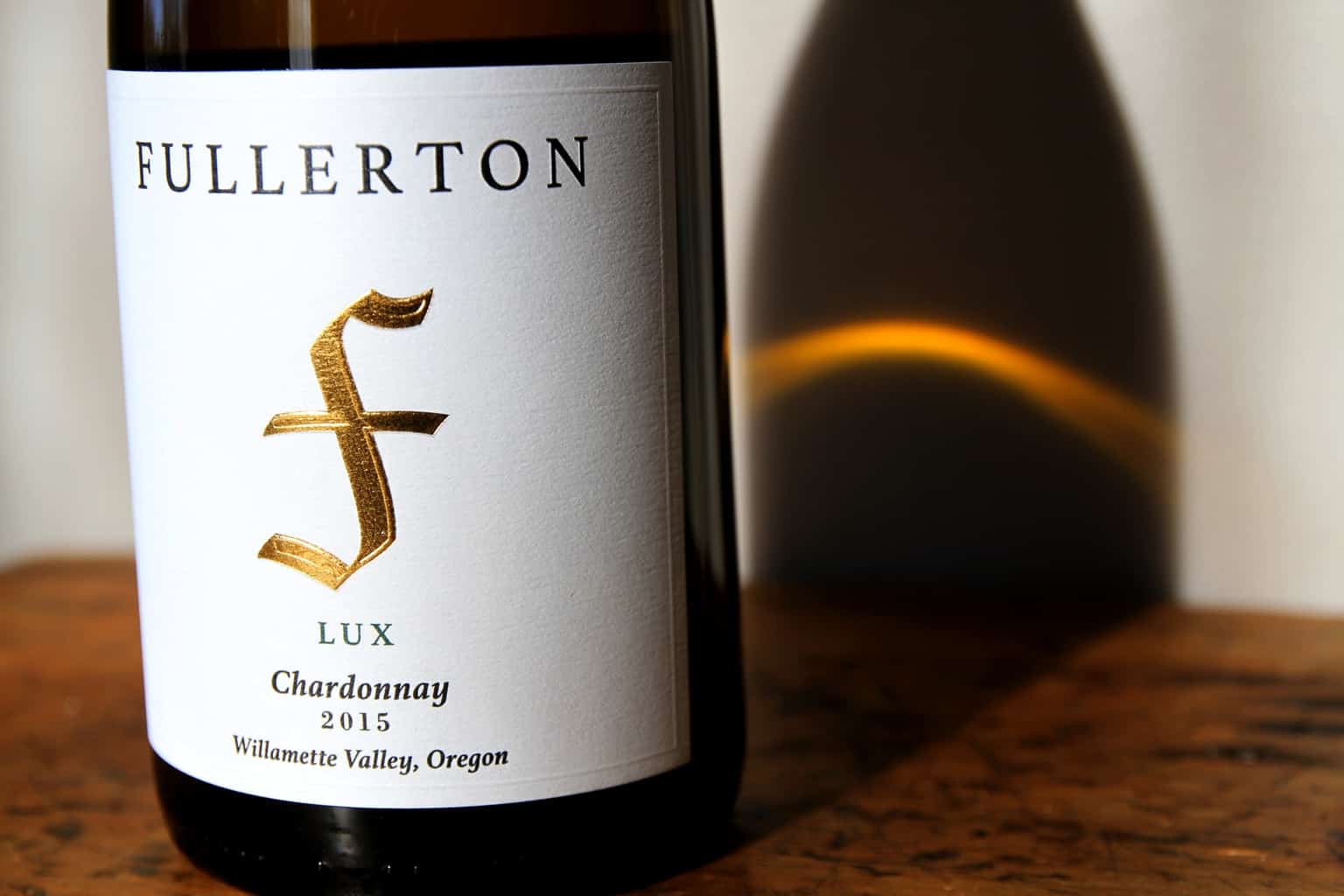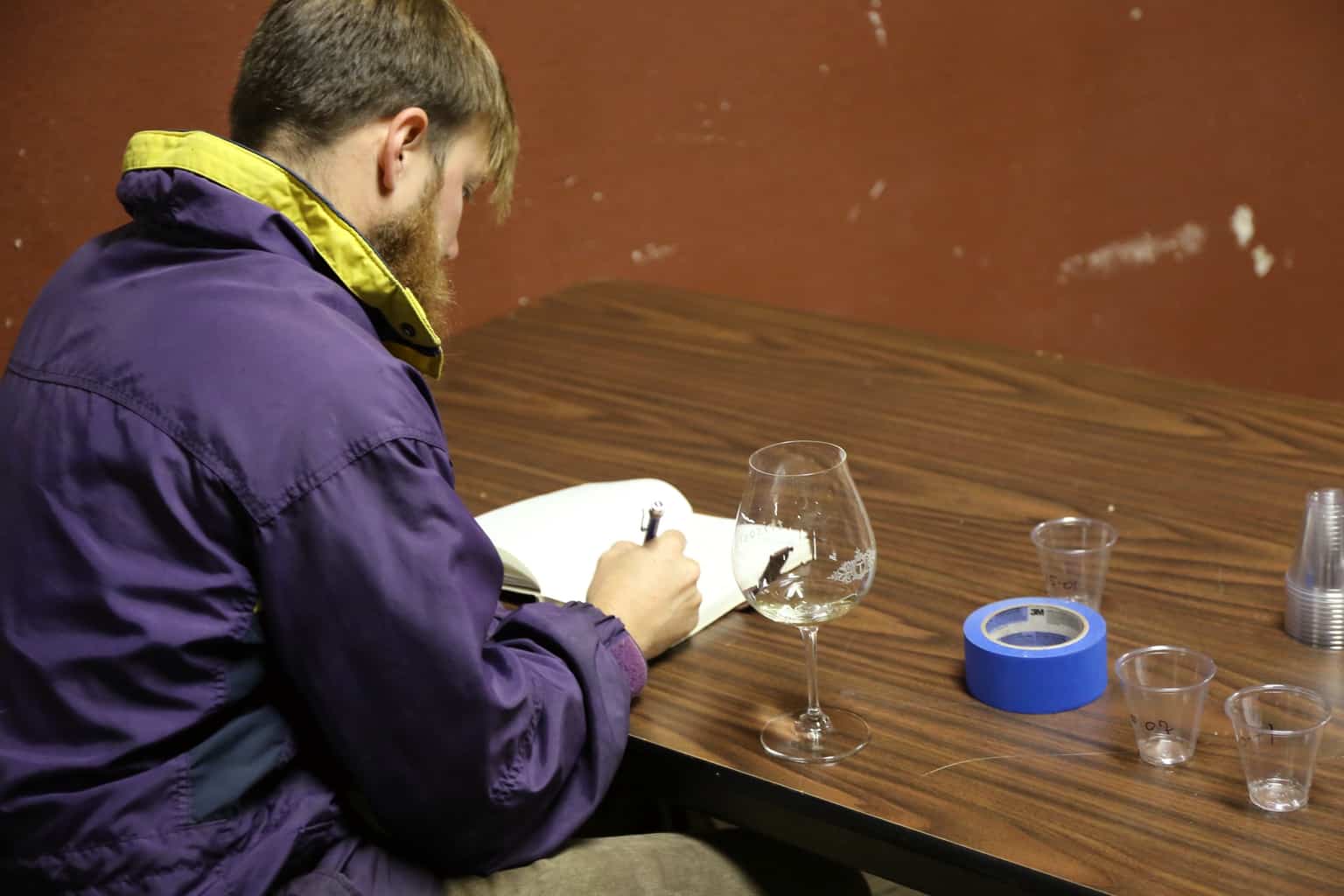Rotator Barrels: Labor of Love
We love experimenting with new fermentation techniques in an attempt to bring more complexity to our wines. In 2011, Eric Fullerton gifted Alex a single rotator barrel after both had seen one in action at a fellow Willamette Valley winery. This first barrel produced our original Pinot Noir, a garage wine consumed by family and friends. The style of the wine left a strong impression, and we consequently adopted the fermentation technique for our first commercial vintage in 2012. Over time, we have loved the wines crafted with rotators so much that we’ve amassed a small fleet.

Rotator barrels are 500 L puncheons (more than twice the volume of a normal 60 gal/228 L barrel) sitting on four wheels on a stand. The wheels allow the barrel to be rotated in a circle. These unique barrels also have a stainless steel latch-lid that seals allowing us to fill the barrel with whole clusters. The closed system enables micro-fermentations to take place within individual berries, a process called carbonic maceration. This unique fermentation uplifts adding freshness and energy to the wines, along with vivid cherry and berry aromatics.
While not common, rotator barrels have recently gained some modest momentum. Several Napa Valley vintners have started opening up the heads of regular 60 gallon barrels, filling them with grapes, and then putting the heads back on the barrels. In Oregon, however, the handful of producers using this technique have chosen to ferment in 500 L puncheons with a latch system. Rotators are also gaining momentum in France, where the practice initially started, with some producers in Burgundy adopting the method as well as several others from lesser-known regions. Several coopers are offering the rotator rigs now, including Allary (our primary source), Seguin Moreau, and Billon.
The effects on the wine are profound. First, the fermentation dynamic contrasts from typical open-top fermentations due to a softer extraction. The gentle nature of rotating the barrel cyclically, which mixes the fermenting juice and skins, yields this measured extraction, while traditional punch-downs or pump-overs result in a more robust style of wine. At Fullerton Wines, we rotate each barrel 1 to 3 times per day, depending upon our assessment of the fermentation. The smaller size of the fermentations (500L in comparison to 1.5 ton macro bins) also means a lower temperature and a longer, slower fermentation. The wines therefore have more time on the skins, providing a longer extraction. The closed nature of the latch system appears to trap in more volatile aroma compounds giving a beautiful bouquet. Moreover, this feature traps more alcohol in the finished wine, which needs to be monitored in warm years while providing a great benefit in cold years. Rotator barrels also give less oxygen to the fermenting wines, which means the tannins have more grip on the palate (though over all the wines present as less firm, creating great tension in the wines). Additionally, the yeasts struggle more in this closed environment creating byproducts that lead to complex aromatics and a beautiful mouthfeel.

Over the years, we have experimented with extended maceration in our rotator barrels. In 2013, for instance, we left the skins in contact with the finished wine for 100 days. Our experimentation has now fine-tuned our extended maceration period to 30 days, though vintage variation will always require us to monitor and adjust.
As a whole, the fermentation dynamics of rotator barrels produce unique and complex wines different from more standard fermentation techniques. You get all of the benefits of oak in the wine, but with a level of integration rarely seen in young red wines. When you ferment on oak you have both heat and thousands of different chemical reactions occurring while the wine is in contact with the wood. The heat speeds up the natural reactions that cause oak and wine to integrate. Moreover, the oak molecules comingle with the other molecules in the wine during fermentation, which chemically integrates the oak into the wine on a level that doesn’t happen when simply placing finished wine into oak barrels to age.
Nearly all of our Fullerton label Pinot Noirs contain fractions of wine fermented in rotator barrels. Producing wines in rotator barrels is undoubtedly labor intensive. Therefore, you won’t see this technique used broadly, especially in larger-scale winery operations. At Fullerton Wines, we’re confident our patrons enjoy the unique dynamic this fermentation technique adds to our elegant and distinctive Pinots.



